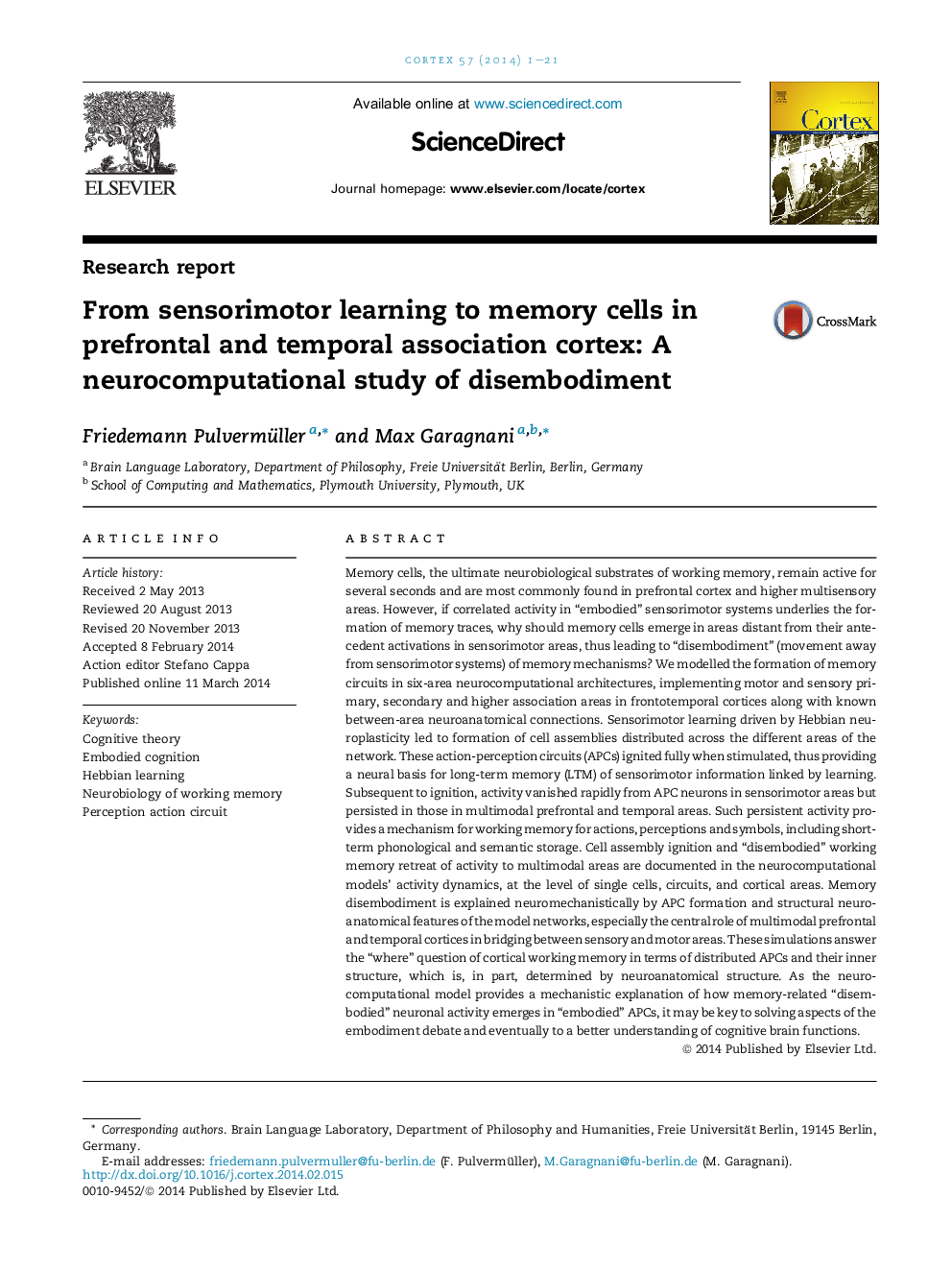| کد مقاله | کد نشریه | سال انتشار | مقاله انگلیسی | نسخه تمام متن |
|---|---|---|---|---|
| 7315325 | 1475475 | 2014 | 21 صفحه PDF | دانلود رایگان |
عنوان انگلیسی مقاله ISI
From sensorimotor learning to memory cells in prefrontal and temporal association cortex: A neurocomputational study of disembodiment
دانلود مقاله + سفارش ترجمه
دانلود مقاله ISI انگلیسی
رایگان برای ایرانیان
کلمات کلیدی
موضوعات مرتبط
علوم زیستی و بیوفناوری
علم عصب شناسی
علوم اعصاب رفتاری
پیش نمایش صفحه اول مقاله

چکیده انگلیسی
Memory cells, the ultimate neurobiological substrates of working memory, remain active for several seconds and are most commonly found in prefrontal cortex and higher multisensory areas. However, if correlated activity in “embodied” sensorimotor systems underlies the formation of memory traces, why should memory cells emerge in areas distant from their antecedent activations in sensorimotor areas, thus leading to “disembodiment” (movement away from sensorimotor systems) of memory mechanisms? We modelled the formation of memory circuits in six-area neurocomputational architectures, implementing motor and sensory primary, secondary and higher association areas in frontotemporal cortices along with known between-area neuroanatomical connections. Sensorimotor learning driven by Hebbian neuroplasticity led to formation of cell assemblies distributed across the different areas of the network. These action-perception circuits (APCs) ignited fully when stimulated, thus providing a neural basis for long-term memory (LTM) of sensorimotor information linked by learning. Subsequent to ignition, activity vanished rapidly from APC neurons in sensorimotor areas but persisted in those in multimodal prefrontal and temporal areas. Such persistent activity provides a mechanism for working memory for actions, perceptions and symbols, including short-term phonological and semantic storage. Cell assembly ignition and “disembodied” working memory retreat of activity to multimodal areas are documented in the neurocomputational models' activity dynamics, at the level of single cells, circuits, and cortical areas. Memory disembodiment is explained neuromechanistically by APC formation and structural neuroanatomical features of the model networks, especially the central role of multimodal prefrontal and temporal cortices in bridging between sensory and motor areas. These simulations answer the “where” question of cortical working memory in terms of distributed APCs and their inner structure, which is, in part, determined by neuroanatomical structure. As the neurocomputational model provides a mechanistic explanation of how memory-related “disembodied” neuronal activity emerges in “embodied” APCs, it may be key to solving aspects of the embodiment debate and eventually to a better understanding of cognitive brain functions.
ناشر
Database: Elsevier - ScienceDirect (ساینس دایرکت)
Journal: Cortex - Volume 57, August 2014, Pages 1-21
Journal: Cortex - Volume 57, August 2014, Pages 1-21
نویسندگان
Friedemann Pulvermüller, Max Garagnani,